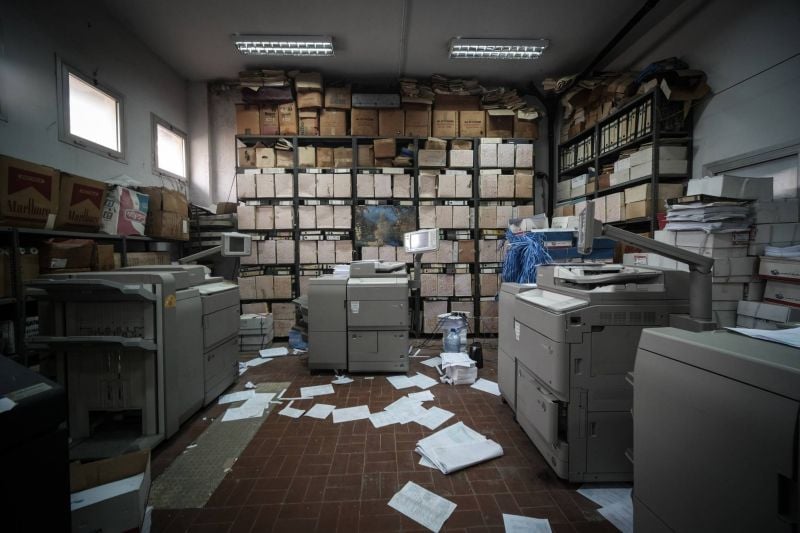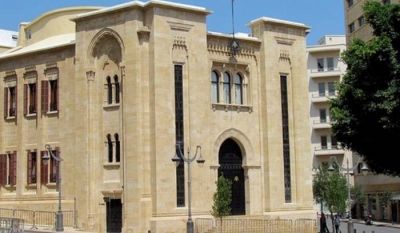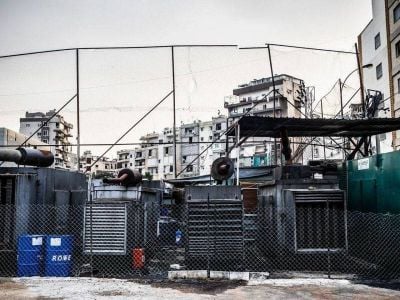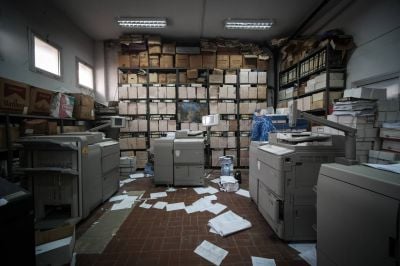
The photocopiers and printers used to issue Electricity of Lebanon (EDL) invoices are installed in a storage room of the billing center relocated to the Zouk Mosbeh power plant, in Kesrouan. (Credit: João Sousa/L'Orient Today)
Lebanon's state-owned Electricité du Liban issued a new detailed list of tariffs on Monday— the first change in price since 1994 when tariffs were set at $23 per barrel.
According to this “national emergency plan for the electricity sector,” the electricity bill will now be calculated in dollars but collected each month in Lebanese lira according to the dollar-lira exchange rate set by Banque du Liban's Sayrafa platform (currently hovering around LL30, 300 per dollar.
Intended to anticipate a general blackout amid the country's economic and financial collapse, the plan should eventually offer “eight to ten hours” of electricity per day to Lebanon's residents. Residents have been receiving between 0 and 2 hours per day for the past several months, as EDL no longer has the means to obtain fuel to power to the electrical grid.
However, with the tariff increase, an increase in production is theoretically required.
In a press release, EDL also announced that it was putting the finishing touches to its billing centers and that the new bills should be issued as of “the end of February 2023.”
In practical terms, this means that the November bills, which are supposed to be the first to be calculated according to the new rates, will not be collected until late February/early March.
According to an EDL source, this delay was granted to allow suppliers to collect all the overdue bills up to October, before starting to issue new ones.
“Some areas, such as Kesrouan, are up to date and only need to settle the bills of August and September. Others are very late,” the source explained.
The new tariffs
As EDL confirmed to L'Orient-Le Jour last month, the new tariffs will range from 10 cents per dollar for consumption of less than 100 kilowatt-hours (kWh) per month to 27 cents per kWh for higher consumption.
Compared to the old rates, this means that the dollar price per kWh for the lowest consumption will increase fivefold, while it will only double for greater consumption.
In Lebanese lira, the difference is much larger, given the large gap between the official rate to the dollar (LL1,507.5 against the dollar) and that on the parallel market rate (nearly LL40,000).
The additional charge per ampere (A) is set at $0.21.
With regard to the exceptional rates that certain locations — industries, tourist and agricultural establishments, places of worship, etc. — had previously benefited from, “all of them will be canceled,” and the cost of $0.27 per kWh will be imposed without exception.
In other words, the $0.1 per kWh rule for consumption of less than 100 kWh will not apply to these users.
All subscription fees will also increase. Those previously set at LL5,000 will now be charged at $4.3, while those at LL10,000 will be charged at $8.6.
The same applies to all large public areas (shopping centers, supermarkets, hotels, etc.), where prices will be calculated at $0.27 per kWh, regardless of the total consumed, and with no difference between daytime, nighttime, and peak hours.
In addition, EDL has a kilovolt-ampere (kVA) tariff, which is the maximum electric meter reading, and a kilovolt-ampere of reactive energy (kVARH) tariff, which is the measurement of the current that is not consumed but is needed to stabilize the grid.
This is an additional charge for these “special” spaces, as EDL calls them, and which amounts to $0.175 per kVA — instead of the previous LL200,000 — while private subscription fees will be calculated at $1.05 per kVA — instead of the previous LL1 ,200 — and supply fees will be $0.7 per kVA.
Finally, for actual consumption of more than 75 percent, the price per kVA will be $0.1, compared to LL50 previously.
Warnings
For this national emergency plan to work, EDL prefers preventive measure to reactionary ones. Recalling that many institutions are involved in the plan's implementation — such as BDL, several ministries, municipalities and other public institutions — the state provider highlights four important guidelines:
. Follow up with BDL on the “monthly or bi-monthly” pricing via Sayrafa
. Secure the equipment and network by the Internal Security Forces
. Ensure that public sector agencies also comply with the new fee schedule
. Require the government to obtain the necessary funds to pay foreign companies the electricity bills
. Subscribers who will experience an increase in rates unseen for nearly 30 years were not forgotten in the institution's statement: any delay in payment will lead to the cessation of distribution, or even legal proceedings until the collection of bills, warned EDL.
It should be remembered that reforming this sector, which was calamitously managed well before the crisis, is included in measures that Lebanon's creditors have long been calling for. This is while the tariff increase is one of the prerequisites imposed by the World Bank to activate the US initiative to bring in Egyptian gas and Jordanian electricity so as to increase EDL's electricity supply.
Until the end of October, tariffs were calculated per kilowatt hour according to a grid that set up a tariff ranging from LL35 to LL200 per kWh divided into several monthly consumption levels: from 0 to 100 kWh, from 100 to 300, from 300 to 400, from 400 to 500 and, finally, more than 500.
Converted to the official rate, this was equivalent to a price range from $0.02 to $0.13 dollars, before the crisis. At the current market rate, these reasonable rates compared to those paid in many parts of the world (between 0.14 and 0.17 euros for individuals in France, for example) become literally derisory.
By comparison, the kWh produced by private generators is charged at nearly $0.5 for October.
This article was originally published in French in L'Orient-Le Jour. Translation by Sahar Ghoussoub.


